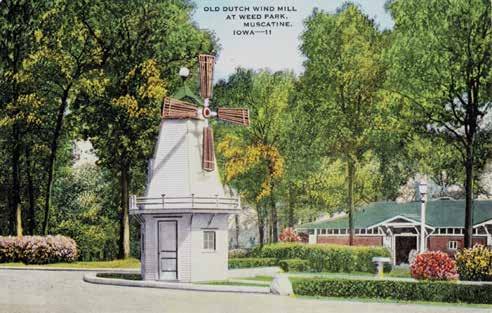
6 minute read
Weed Park
Entrance to Weed Park – post card, 1938
By Jennifer Howell & Virginia Cooper
Advertisement
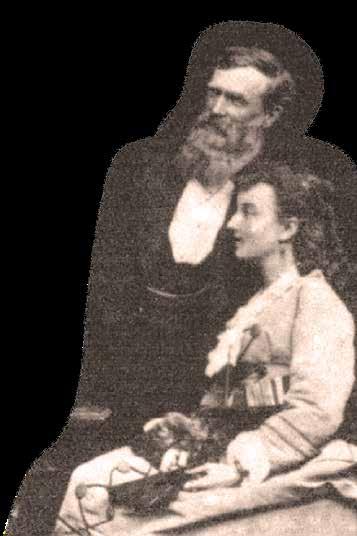
James Weed moved to Bloomington, now Muscatine, in 1839. He was qualified to practice both medicine and dentistry but his true love was horticulture. On May 12, 1899, pioneer horticulturalist James Weed and his wife Mary, deeded 63 acres of their farmland to the City of Muscatine and the Muscatine Park and Floral Association for use as a park. The deed cost $1 and required the city to lease the land to the Muscatine Park and Floral Association, with the Weeds receiving $200 annually for the lease. The Muscatine Park and Floral Association was incorporated on June 13, 1899. The lease was paid for with proceeds from fundraisers and the Association’s membership dues. The association was the forerunner to the Muscatine Park Commission. The park became a popular gathering spot for Muscatine residents and remains so today.

The Weed Park clubhouse was a popular choice for social events from 1906 to 1930 . The clubhouse was two stories and boasted seven rooms, a full kitchen and an 11 foot wide veranda . The building was dedicated on September 27, 1906 . On June 15, 1930, the clubhouse caught fire and it was decided not to rebuild the structure . Instead a memorial rose garden was planted in its place . The rose garden at Weed Park was an accredited show garden with “All-American Rose Selections”, a nonprofit association created by the American rose industry dedicated to the introduction and promotion of roses, from 1939 to 2013, while the organization was in existence .
CANNONS
The two cannons in Weed Park point across the Mississippi River and are located near the park’s main entrance . The Grand Army of the Republic Ladies Auxiliary was instrumental in raising funds for the mounting of the cannons onto iron bases on concrete slabs c1910 . Listed on the
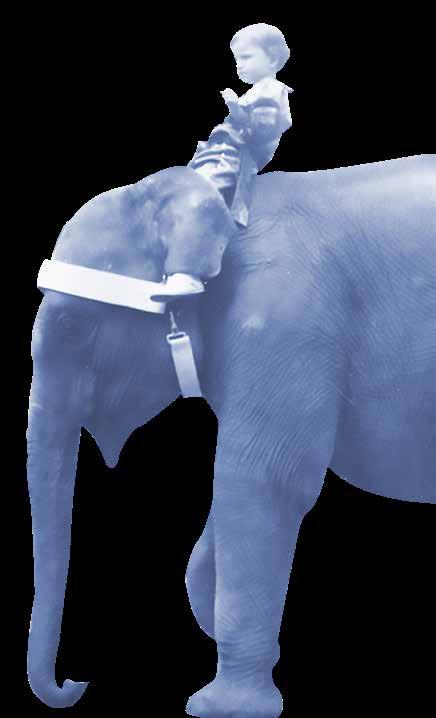

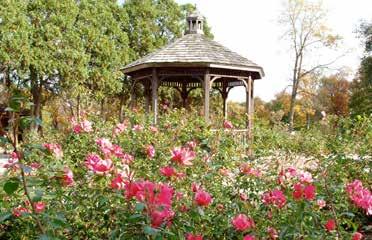
Iowa Civil War Monuments website, the 10 inch Rodman guns (cast at Fort Pitt Foundry in 1866 and Fort Seyfert, McManus & Company of Reading, Pennsylvania in 1864) each weighs approximately 15,000 pounds .
ZOO
In 1914 within Weed Park, an enclosure was built covering one and threefourths acres, just northeast of the Clubhouse . A shelter was also erected to house the charter members of the Weed Park Zoo - deer, named Bessie and Chip, that arrived at the park after a 4-day journey from Oro Fino, Idaho, as a gift of George Altender .
The zoo continued to grow and obtain more animals over the years . Admission was free to the zoo until its last few years . At that time fees ranging from 35 cents to 75 cents were implemented . The zoo closed in 1980 with all of the animals being adopted out . Besides deer, over the years the zoo housed the popular elephants Dolly and Candy, Sheba the lioness, Bengal tigers, African antelope, ‘honey’ bears, black bears, peacocks, monkeys (including Kim the chimpanzee), mountain goats, small mammals, an alligator pit, and reptile house and many more .
SWIMMING POOL
The Weed Park pool and dressing pavilion were dedicated on August 17, 1921 . The $20,000 pool measured 50 feet wide by 190 feet long and had a capacity to hold 189,000 gallons of water . Admission at that time was free, and Thursdays were set aside for women only . A diving board and elevated platform were available for the brave of heart to use . Beneath the pavilion a boiler provided hot water for the showers and furnished enough heat to maintain the temperature of the pool water at 70 degrees or above . Later there was a charge to swim in the pool . This outdated pool was removed and a new Aquatic Center was built with a dedication and opening ceremony on June 2, 2004 .
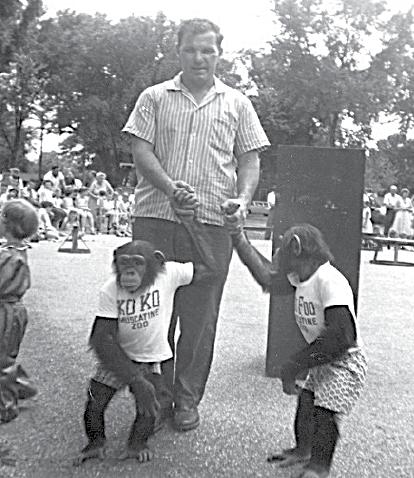
WADING POOL
Built in 1920, Weed Park featured a wading pool, located near the middle of the park, where the road branches . Without a filtration system, this pool was closed around 1980 .

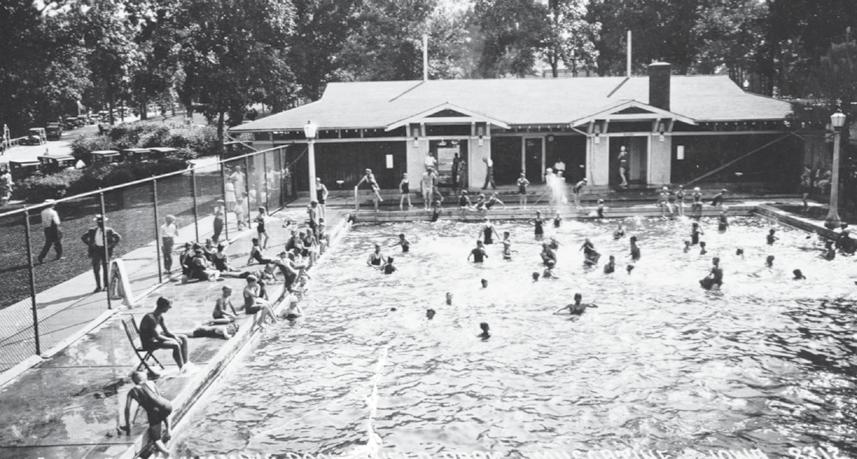
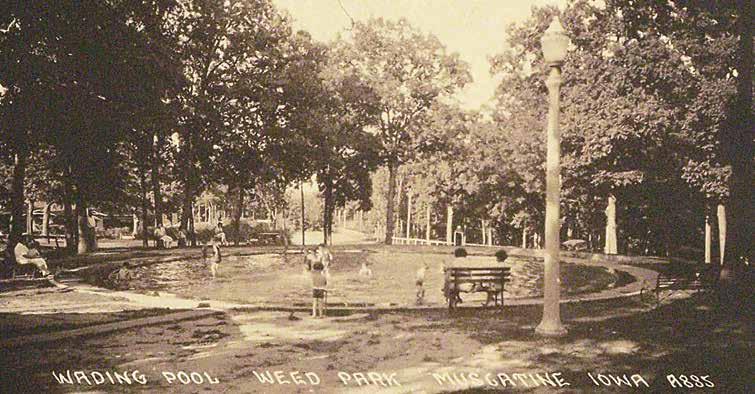
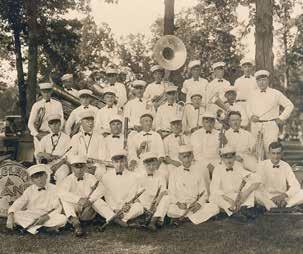
Zeigler’s Concert Band Young Women’s Orchestra
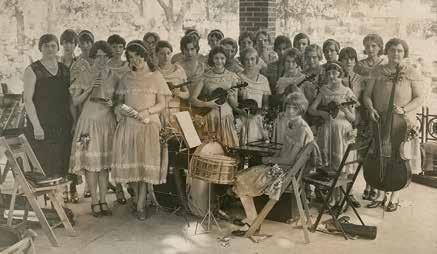
2002 .16
Weed Park views were featured on many souvenir items including like this sterling silver spoon, showing the “Club House” (among other Muscatine views) on the handle .
Today, Weed Park covers a total of 72 acres and is managed and cared for by the Parks & Recreation Department of the City of Muscatine . Among its features are the 3-acre lagoon stocked for fishing, original stone features, a new Aquatic Center, period bandstand, concession stand, multiple picnic shelters, playground equipment, the Rose Garden, 10 tennis courts, sand volleyball courts and the Zoo Garden (in place of the animal zoo) .
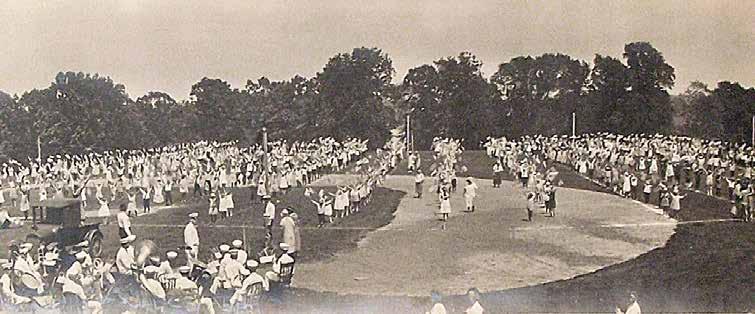

BANDSTAND
One feature of Weed Park that still stands today is the octagonal bandstand, located in the middle of the park . Built in 1925, the bricks for the bandstand were donated by the Muscatine Sand & Gravel Company and were made with a mixture of various colored glass .
LAGOON
In 1927, an artificial pond was created on the north side of the park, known as the Weed Park Lagoon . The pond was stocked and had a spillway . The stone lighthouse on the island in the middle of the lagoon was built in 1929 as a home for pond ducks . The stone bridge spanning the center of the pond, was built in 1936 . Both stand today .
These structures and many others throughout the park and surrounding neighborhood (including stone planters, a goldfish pool, stone birdhouse, bell stand, freestanding fireplace, umbrellashaped picnic shelter, decorative draped stone fencing, etc .), were created by park custodian Herman Muchow . Although not a trained artist, around 1921 he began to transform the park (a grassy expanse with shade trees) with his creations .
Over the years, a variety of other structures have graced Weed Park . The structure located south inside the park’s main entrance was originally an old waiting shelter for the local streetcar line . An old bandstand stood near the cannons and a windmill once stood near the old swimming pool . On June 29, 1998, a powerful thunderstorm swept across Iowa, downing power lines, toppling trees and claiming life in the state . Weed Park was one of the hardest hit areas in Muscatine . Wind gusts reaching 120 miles per hour destroyed nearly 90 of the park’s shade trees . By April of 1999, over 60 new trees had been planted by the city and volunteers, to be enjoyed for generations to come . n
